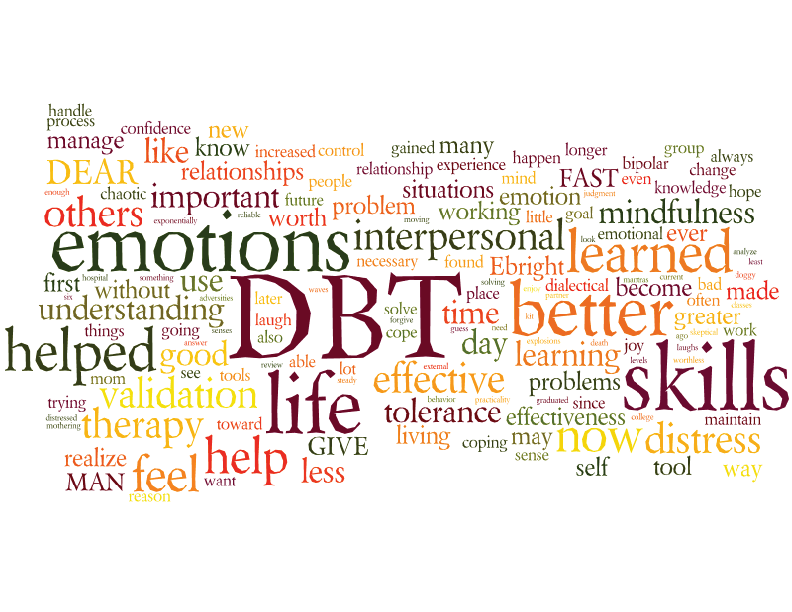
By Raymond Navarro LMHC, Certified DBT Psychotherapist
Introduction
Dialectical Behavior Therapy (DBT), developed by Dr. Marsha Linehan, has emerged as a highly effective and widely recognized therapeutic approach for individuals with Borderline Personality Disorder (BPD). This paper explores the core concepts of DBT, the symptoms of BPD, detailed treatment options, and offers guidance for family members and partners of individuals struggling with this complex condition.
Understanding Borderline Personality Disorder
Borderline Personality Disorder is a challenging mental health condition characterized by a range of symptoms that impact an individual’s emotions, relationships, and overall quality of life. Some of the common symptoms and behaviors associated with BPD include:
- Intense Mood Swings: Individuals with BPD often experience rapid and intense shifts in their emotional states, which can be triggered by seemingly minor events.
- Impulsivity: Impulsive behaviors such as self-harm, substance abuse, reckless driving, and binge eating are common in individuals with BPD.
- Unstable Relationships: People with BPD may have tumultuous and unstable relationships, characterized by intense idealization and devaluation of others.
- Fear of Abandonment: A pervasive fear of abandonment, even in the absence of objective evidence, can lead to clingy or desperate behaviors.
- Identity Disturbance: An unstable self-image and sense of self are typical in individuals with BPD.
- Self-Harming Behaviors: Many individuals with BPD engage in self-harming behaviors, such as cutting, burning, or hitting themselves, as a way to cope with emotional pain.
Dialectical Behavior Therapy (DBT)
DBT is a comprehensive therapeutic approach designed to address the unique challenges faced by individuals with BPD. The treatment incorporates the following key components:
- Individual Therapy: In DBT, individuals meet one-on-one with a therapist to address specific issues and develop skills for managing emotions and behaviors.
- Skills Training: The skills training component of DBT focuses on teaching clients core skills in four main areas: mindfulness, distress tolerance, emotion regulation, and interpersonal effectiveness. These skills help individuals regulate their emotions, tolerate distress, and navigate relationships effectively.
- Phone Coaching: Clients have access to phone coaching for crisis situations, allowing them to reach out to their therapist for guidance outside of scheduled sessions.
- Group Therapy: Group therapy sessions provide individuals with opportunities to practice and generalize their newly acquired skills in a supportive environment.
- Dialectical Approach: DBT takes a dialectical approach, encouraging individuals to find a balance between acceptance and change. This helps clients accept their current emotional state while also striving to improve and make healthier choices.
The Role of Dr. Marsha Linehan
Dr. Marsha Linehan is the visionary behind DBT. Her groundbreaking work has revolutionized the treatment of BPD and has also proven effective for a range of other mental health conditions. Dr. Linehan’s dedication to understanding the complex needs of individuals with BPD and her innovative approach has transformed the field of psychology and psychiatry.
Treatment Options for BPD
In addition to DBT, there are several other treatment options for BPD, including:
- Medication: While medication cannot treat BPD itself, it can help manage specific symptoms such as mood swings or depression. Antidepressants, mood stabilizers, and antipsychotic medications may be prescribed.
- Cognitive-Behavioral Therapy (CBT): Traditional CBT can be beneficial for some individuals with BPD, as it focuses on identifying and changing thought patterns and behaviors.
- Mentalization-Based Therapy (MBT): MBT helps individuals develop a better understanding of their own thoughts and emotions, as well as those of others.
- Schema-Focused Therapy: This approach targets the maladaptive schemas or core beliefs that underlie BPD symptoms.
Supporting a Loved One with BPD
Family members and partners of individuals with BPD often find themselves navigating challenging and emotionally charged situations. Here are some essential guidelines for offering support:
- Educate Yourself: Learn as much as you can about BPD to better understand the condition and its impact.
- Communicate Openly: Encourage open and non-judgmental communication with your loved one. Validate their feelings and experiences.
- Set Boundaries: Establish and maintain healthy boundaries to protect your own well-being while still providing support.
- Encourage Treatment: Gently encourage your loved one to seek treatment and be patient as they work through the process.
- Self-Care: Ensure you prioritize your own self-care and seek support from friends, support groups, or a therapist if necessary.
Conclusion
DBT, as pioneered by Dr. Marsha Linehan, offers hope and effective treatment for individuals with Borderline Personality Disorder. It emphasizes skills development and a compassionate approach to healing. Additionally, there are other treatment options available, and support from family members and partners is crucial in the journey to recovery. Understanding the complexities of BPD, its treatment, and ways to support loved ones can make a significant difference in the lives of those affected by this condition.